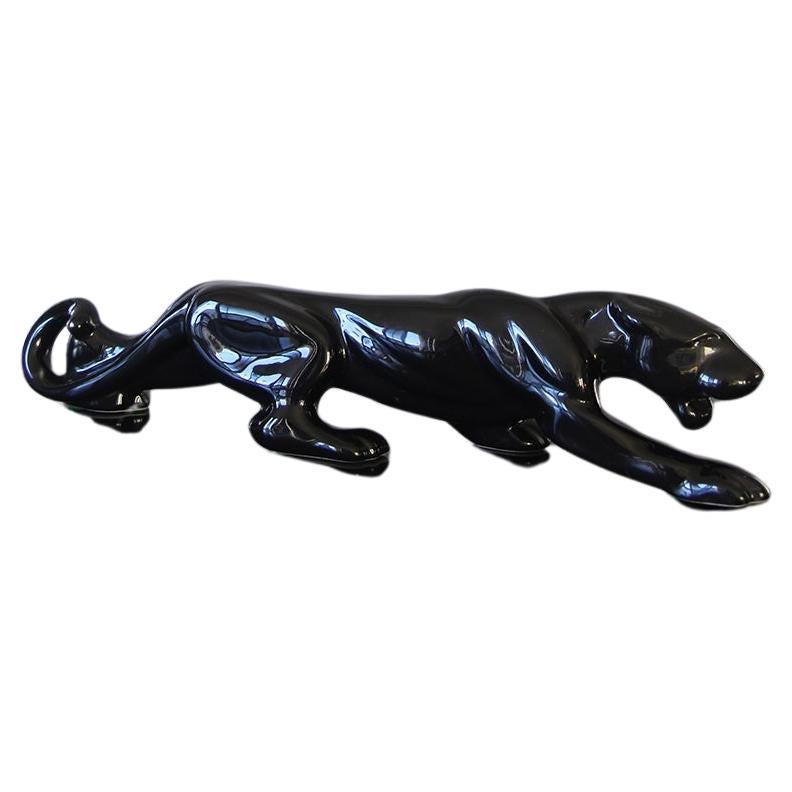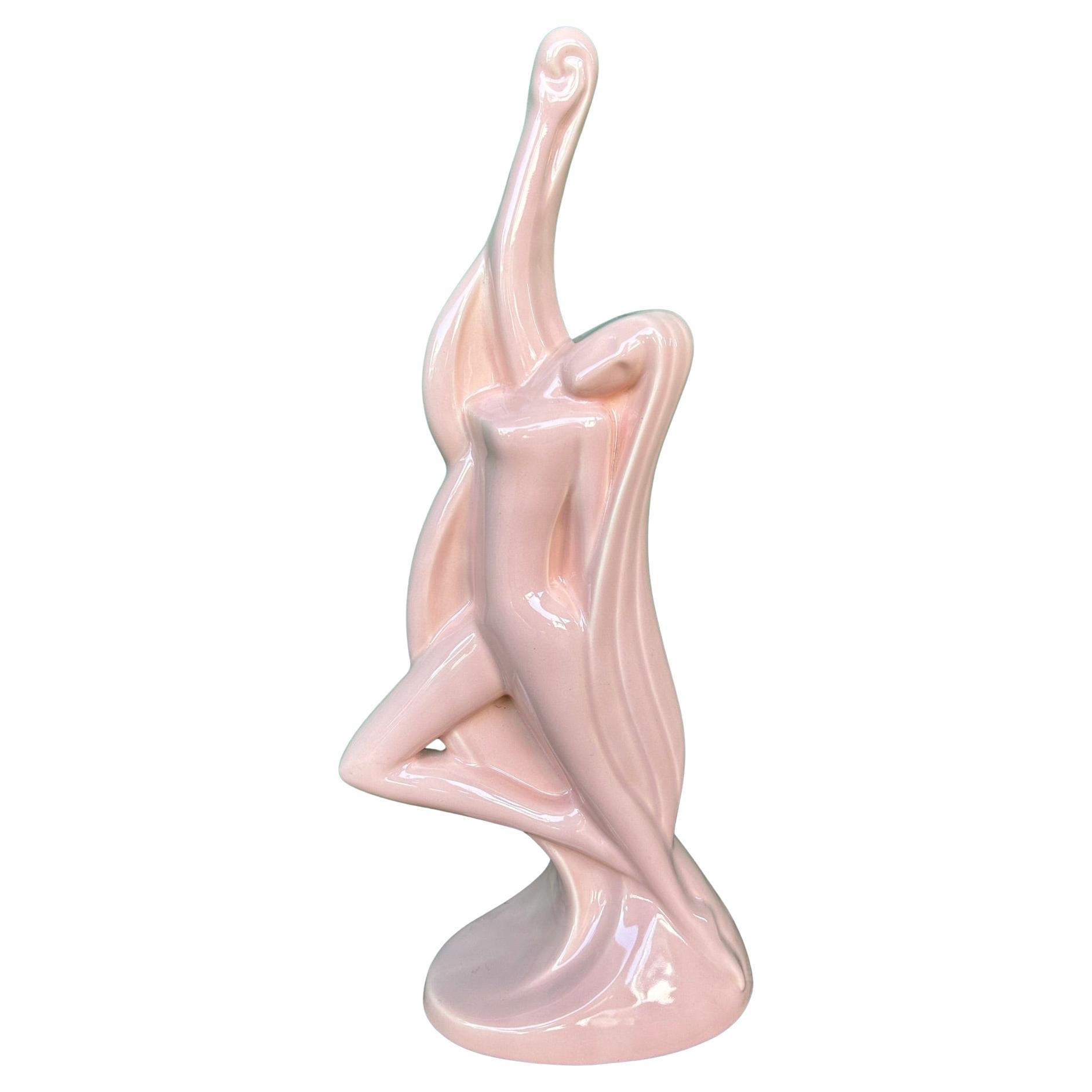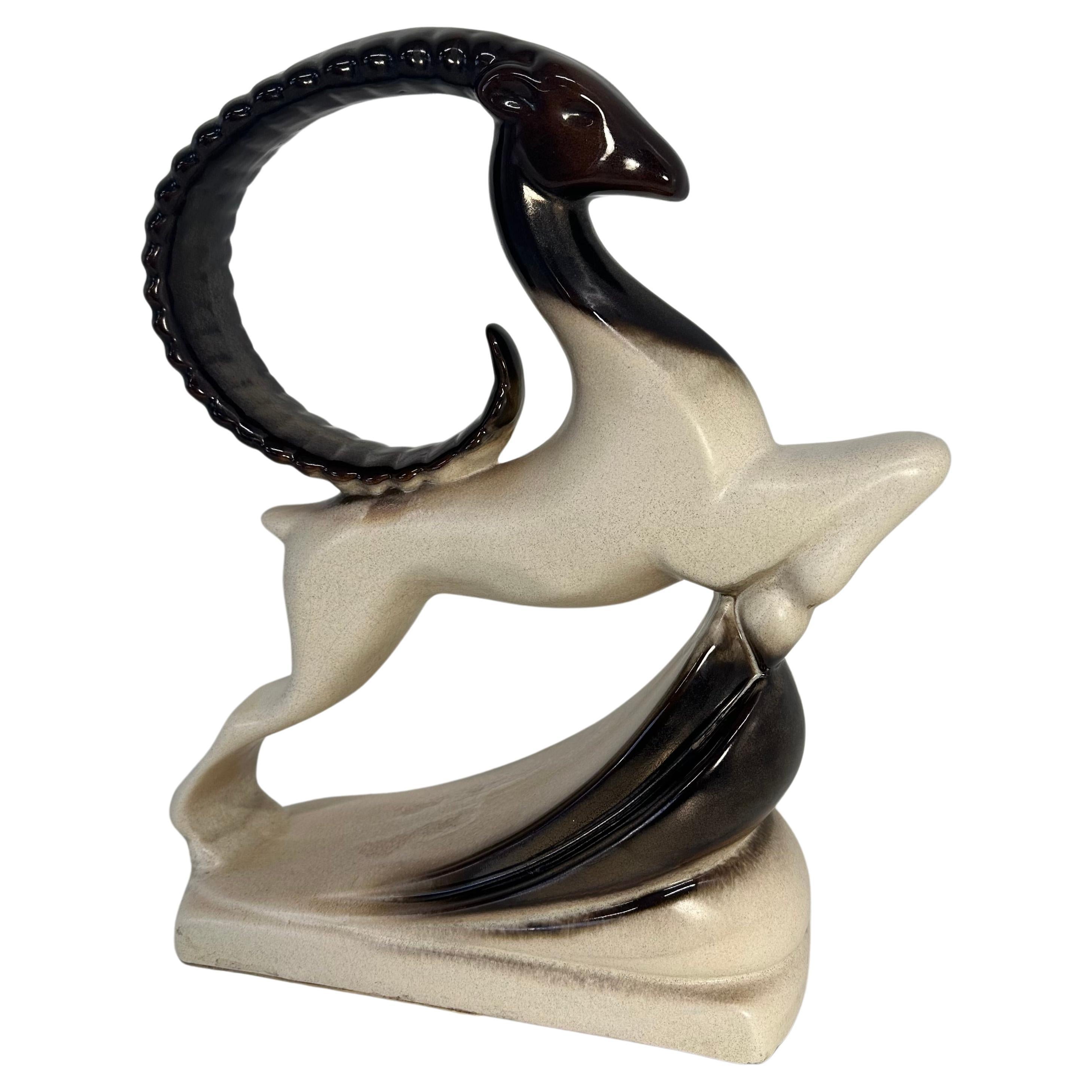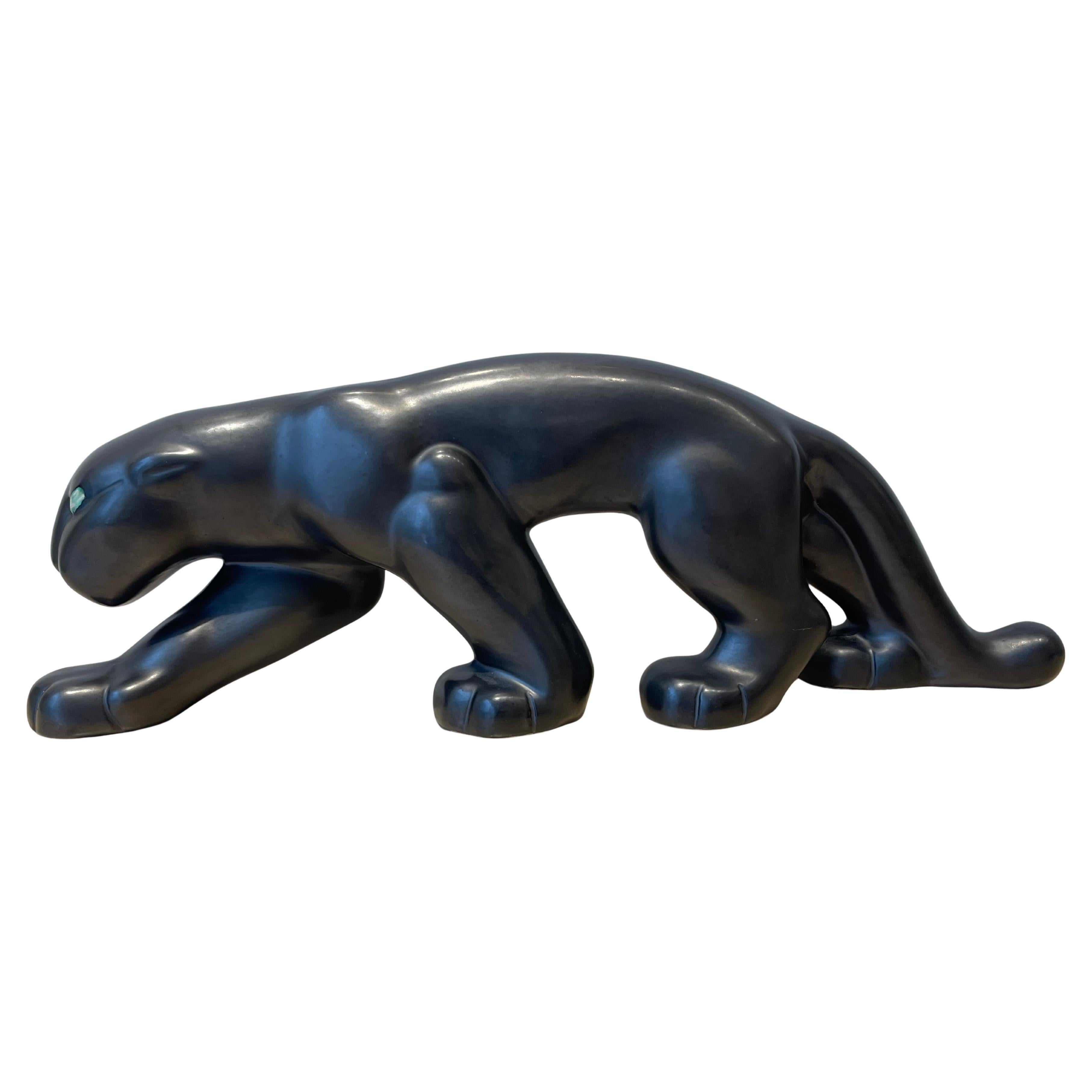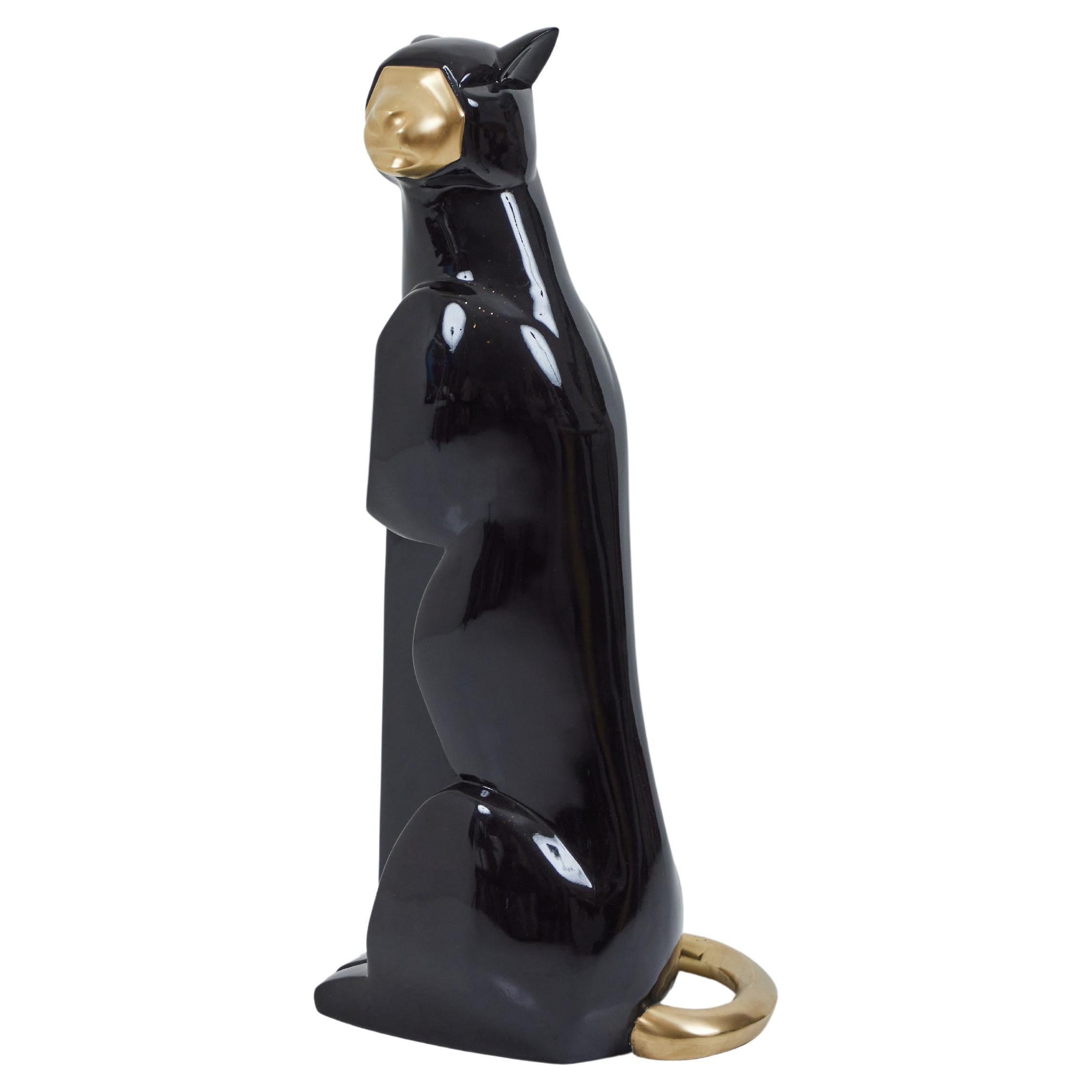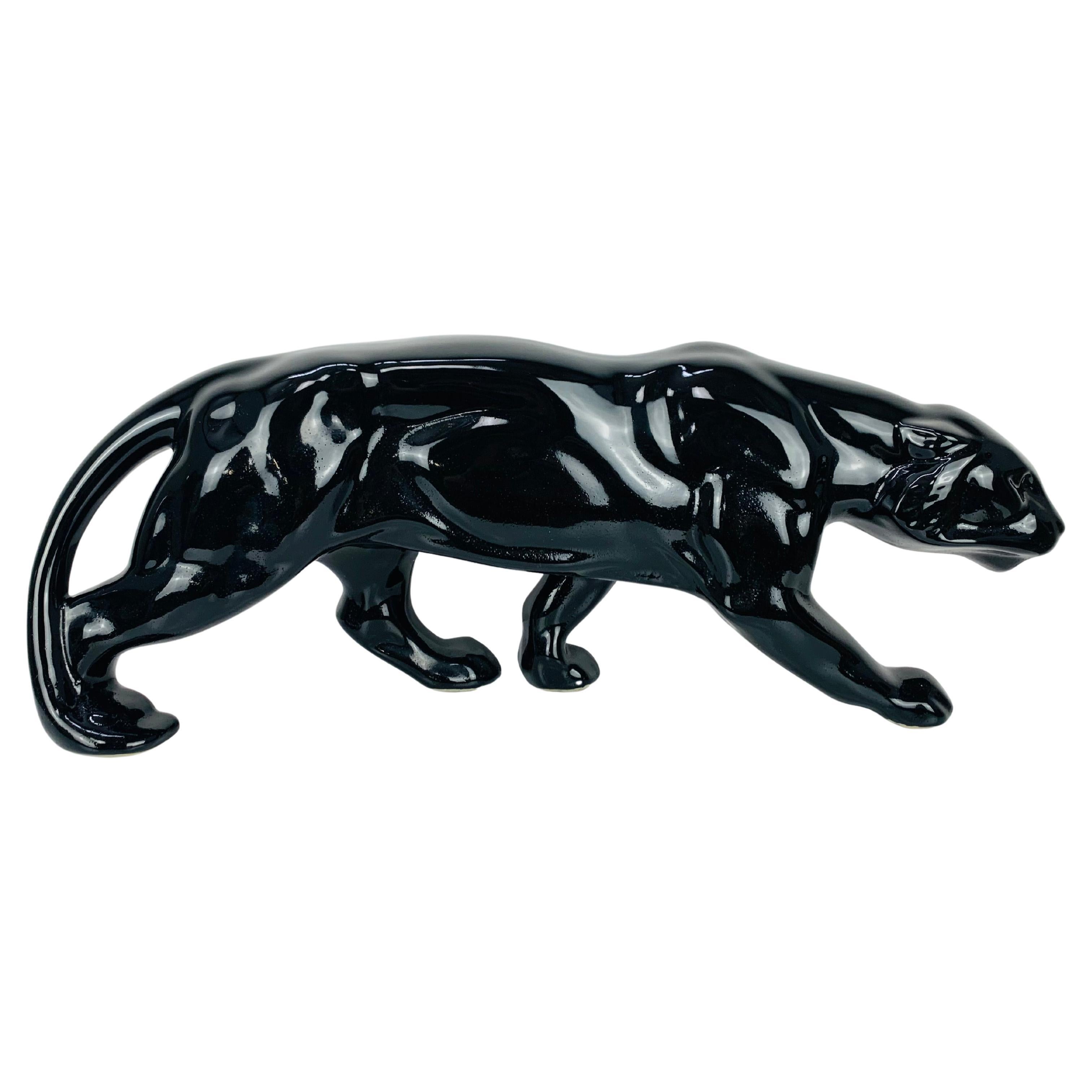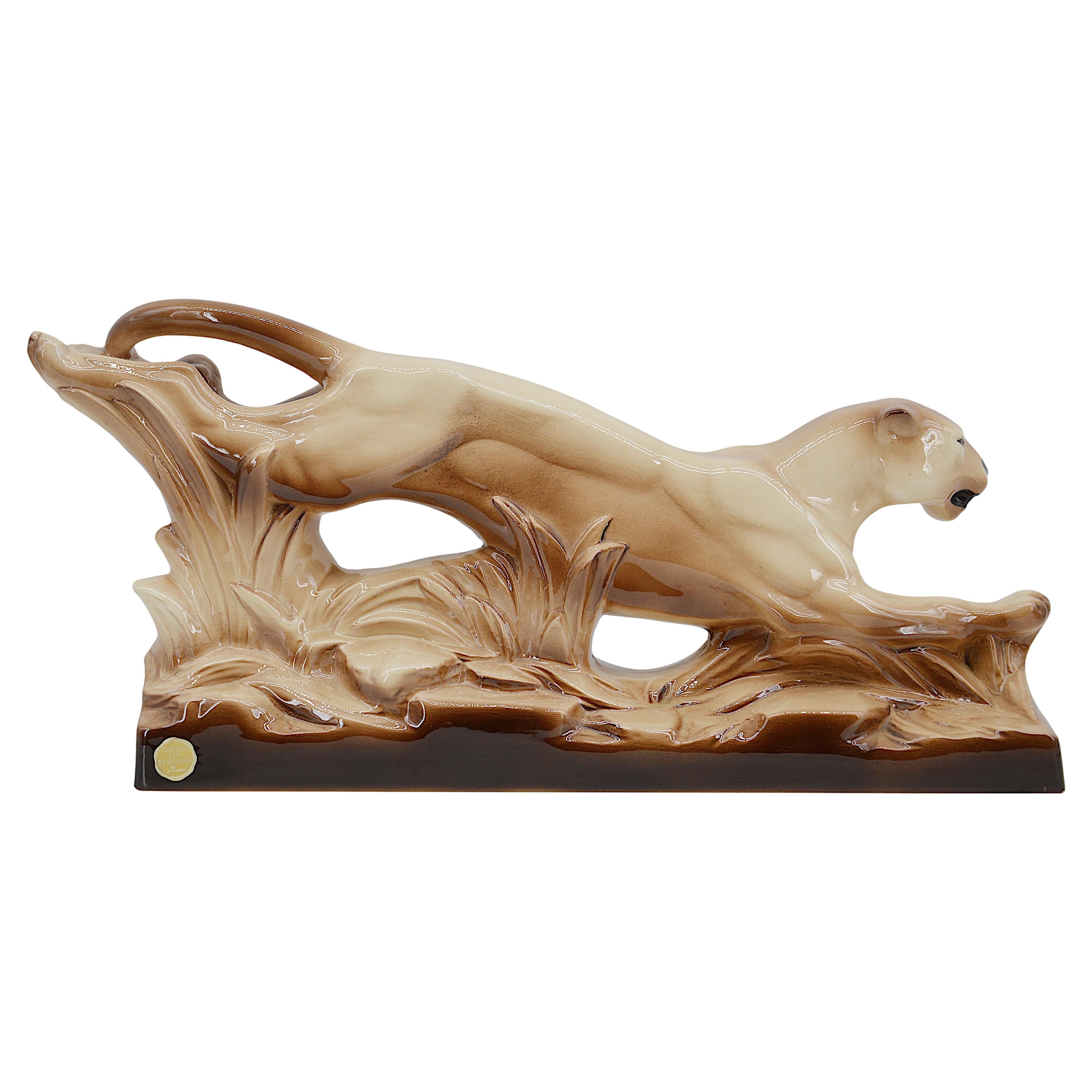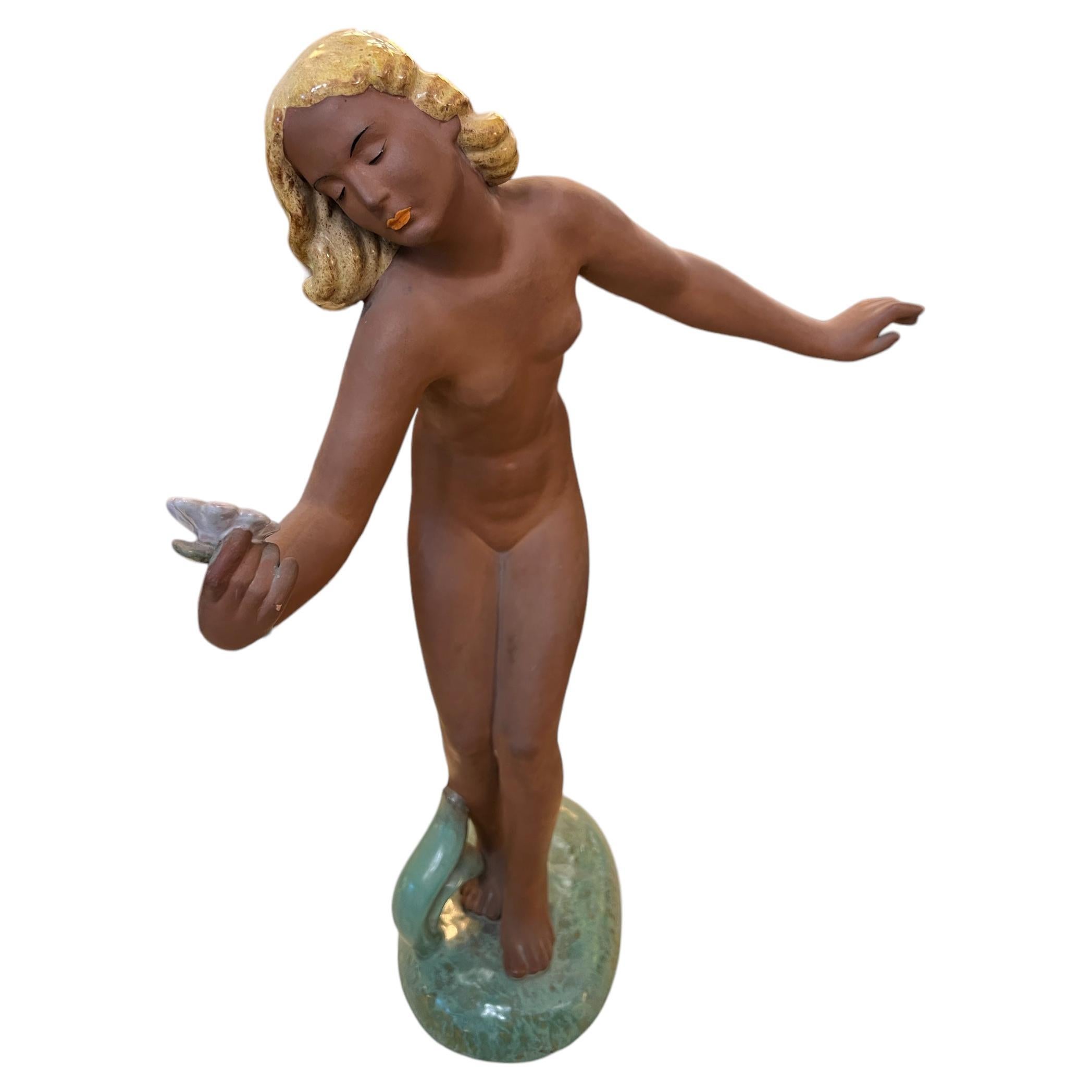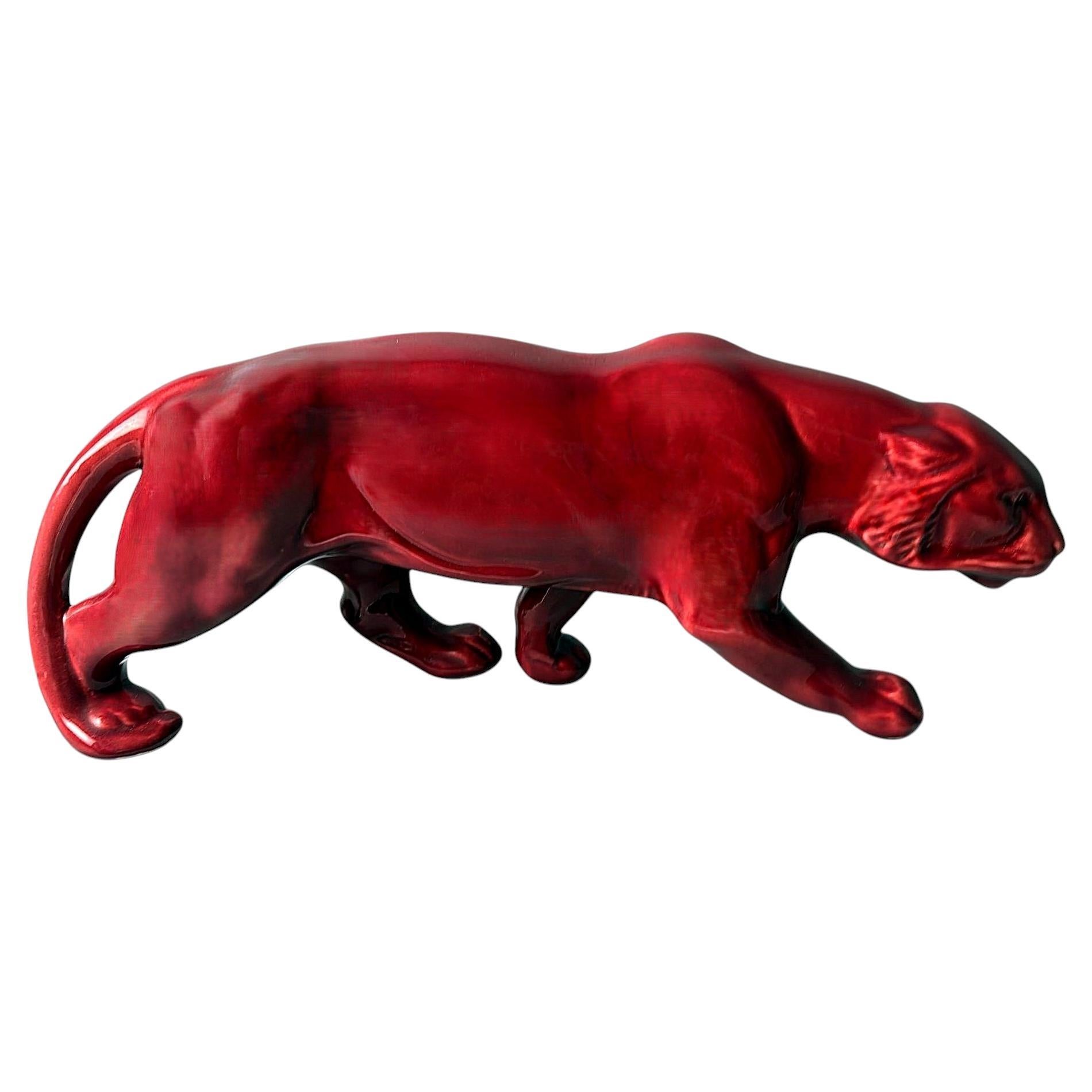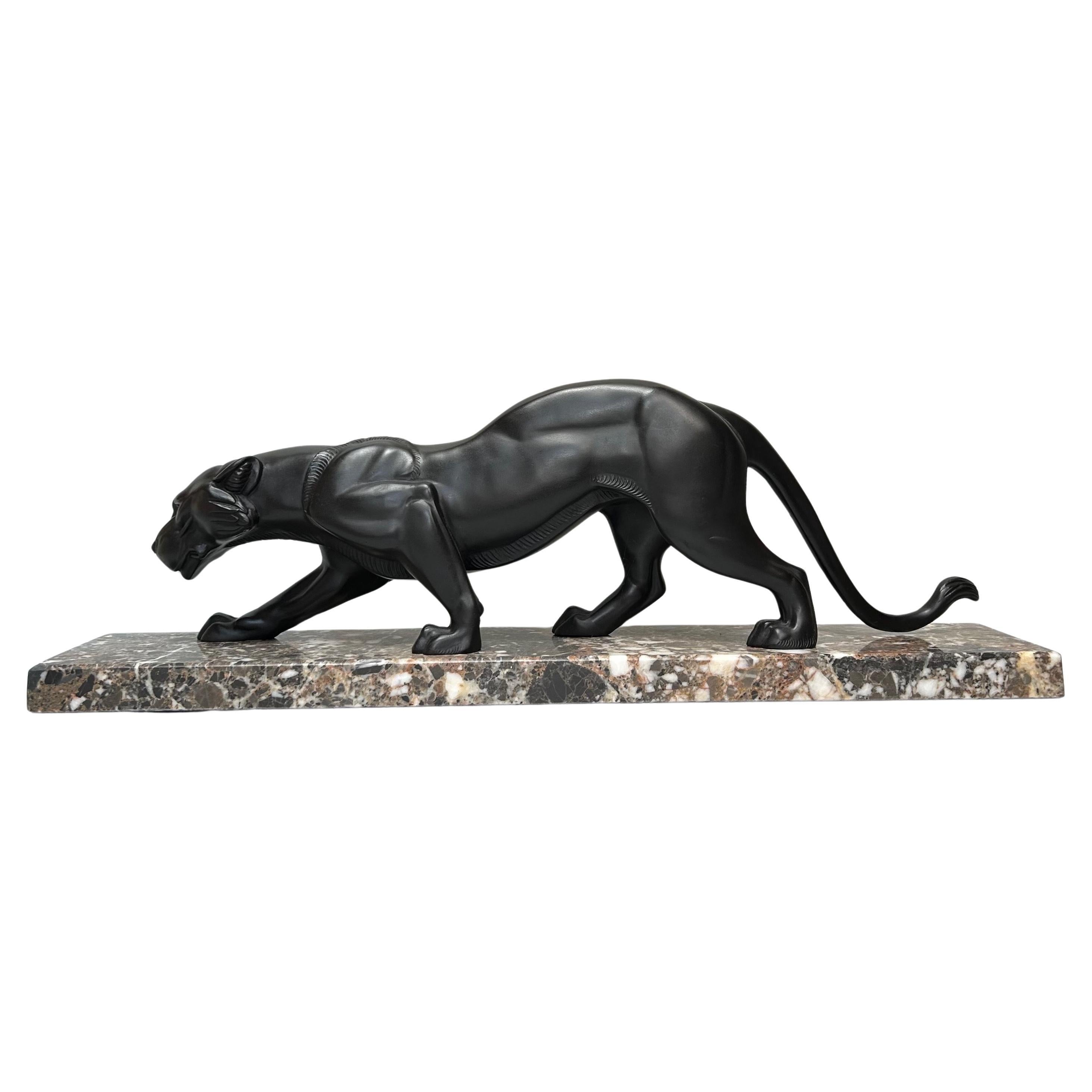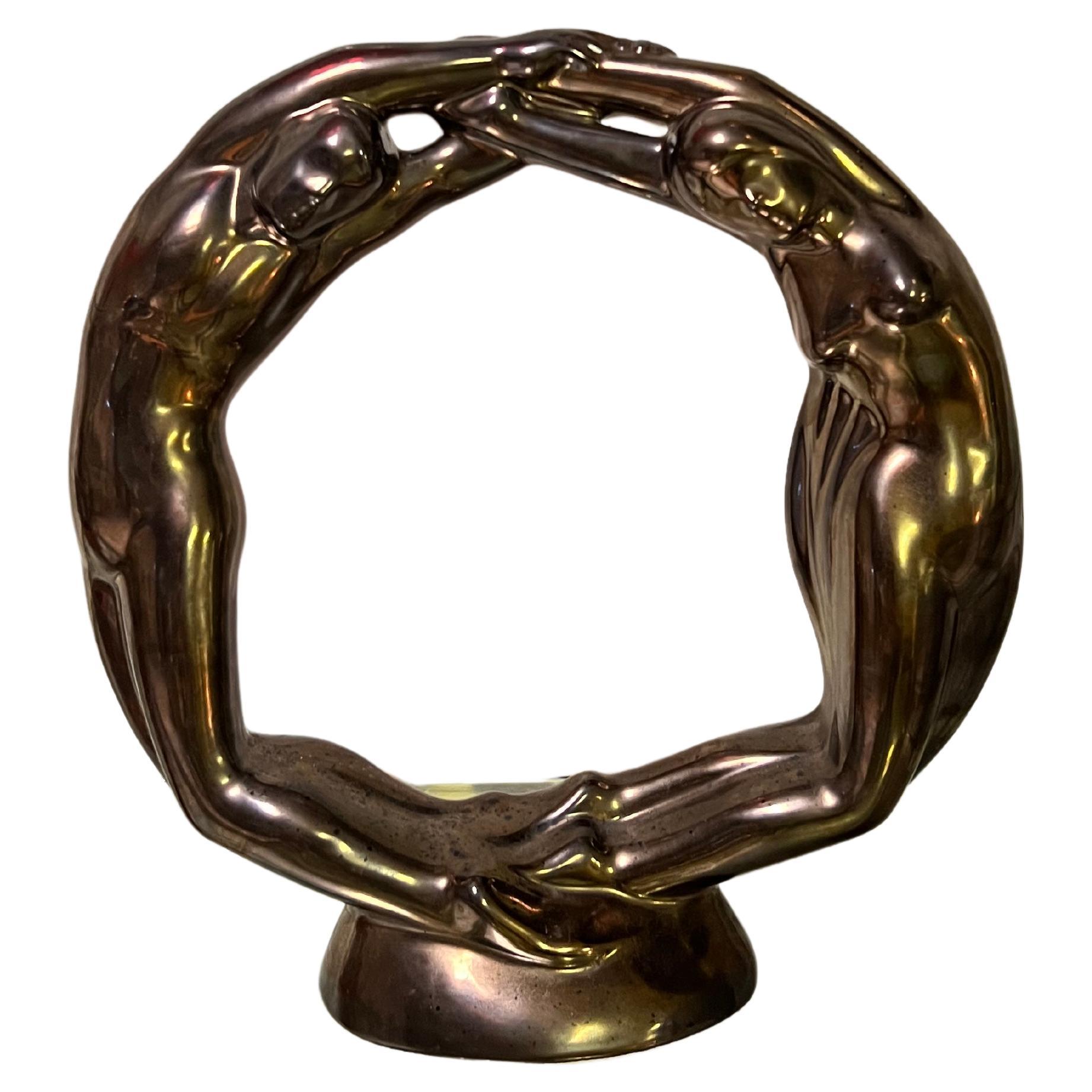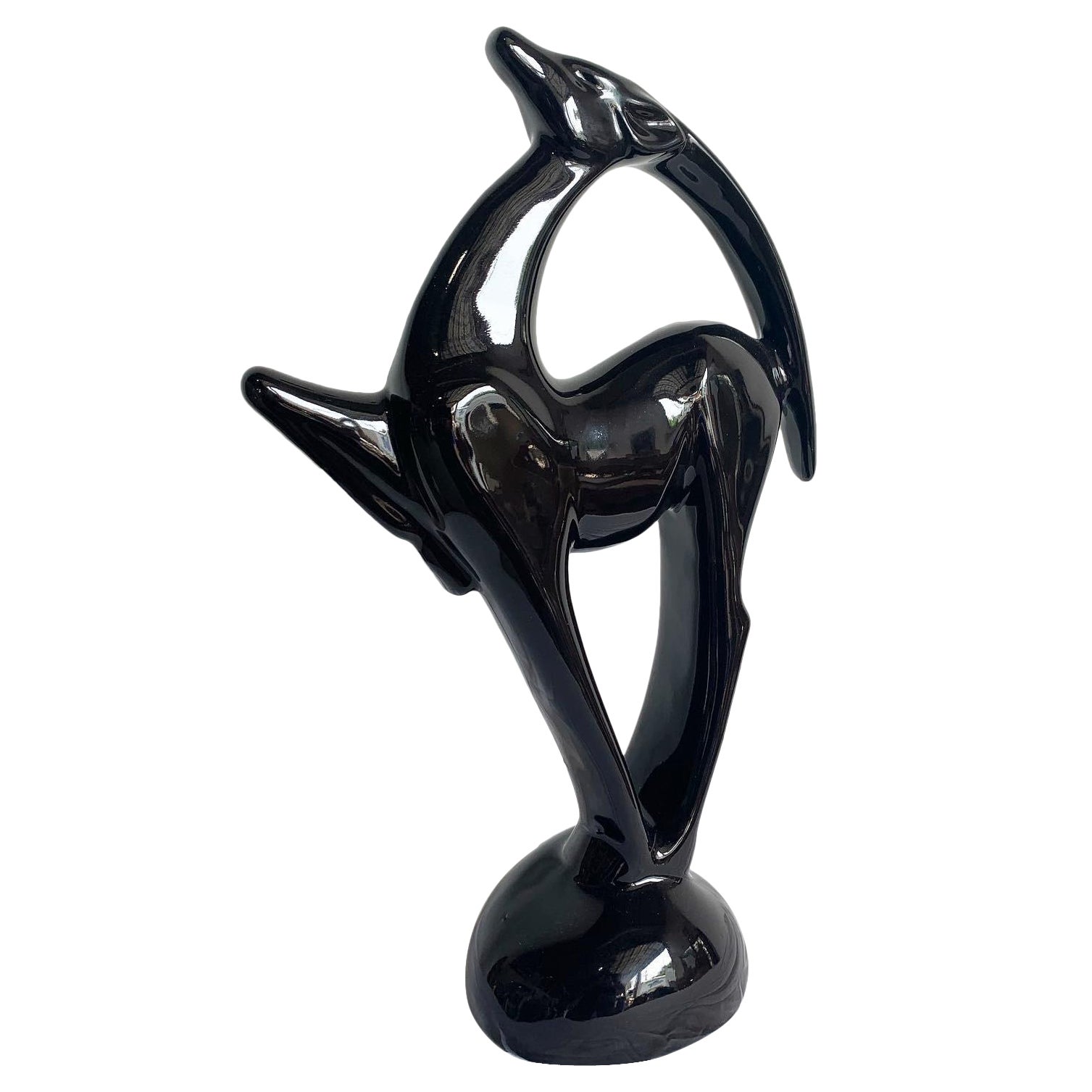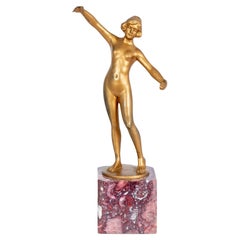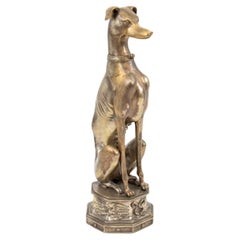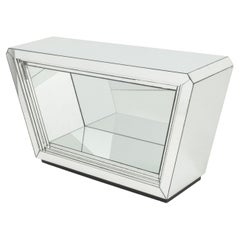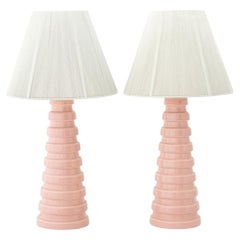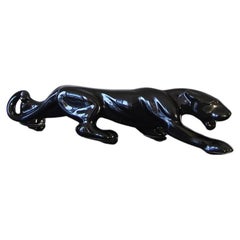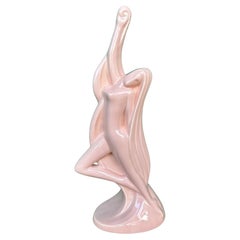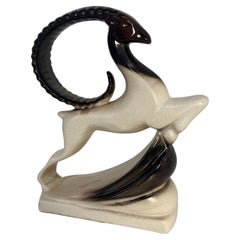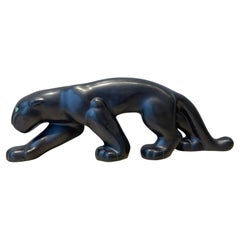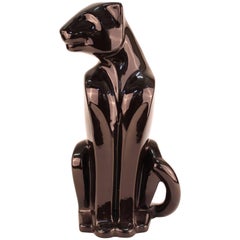
Haeger Art Deco Style Ceramic Black Panther
View Similar Items
Want more images or videos?
Request additional images or videos from the seller
1 of 10
Haeger Art Deco Style Ceramic Black Panther
Price:$650
$699List Price
About the Item
- Creator:Royal Haeger (Maker)
- Dimensions:Height: 21 in (53.34 cm)Width: 11 in (27.94 cm)Depth: 8 in (20.32 cm)
- Style:Art Deco (In the Style Of)
- Materials and Techniques:
- Place of Origin:
- Period:1980-1989
- Date of Manufacture:1980s
- Condition:Wear consistent with age and use.
- Seller Location:Astoria, NY
- Reference Number:Seller: R314TB - 112159 - 03181stDibs: LU889310256503
About the Seller
4.9
Gold Seller
Premium sellers maintaining a 4.3+ rating and 24-hour response times
1stDibs seller since 2010
2,591 sales on 1stDibs
Typical response time: 7 hours
Authenticity Guarantee
In the unlikely event there’s an issue with an item’s authenticity, contact us within 1 year for a full refund. DetailsMoney-Back Guarantee
If your item is not as described, is damaged in transit, or does not arrive, contact us within 7 days for a full refund. Details24-Hour Cancellation
You have a 24-hour grace period in which to reconsider your purchase, with no questions asked.Vetted Professional Sellers
Our world-class sellers must adhere to strict standards for service and quality, maintaining the integrity of our listings.Price-Match Guarantee
If you find that a seller listed the same item for a lower price elsewhere, we’ll match it.Trusted Global Delivery
Our best-in-class carrier network provides specialized shipping options worldwide, including custom delivery.More From This Seller
View All"Le Reveil" Art Deco Gilt Bronze
Located in Astoria, NY
"Le Reveil" Art Deco Gilt Bronze Sculpture, circa 1920, depicting a woman with outstretched arms on a pink fossil marble base, indistinctly signed and faintly marked "Keck". 10.5" H ...
Category
Vintage 1920s German Art Deco Figurative Sculptures
Materials
Marble, Bronze
Art Deco Silvered Brass Whippet Statue
Located in Astoria, NY
Art Deco Silvered Brass Whippet Statue, seated on octagonal base. 30" H x 10" W x 10" D. Provenance: From a 5th Avenue Estate. Keywords: Animalier, Scult...
Category
Early 20th Century Art Deco Animal Sculptures
Materials
Brass
Art Deco Style Mirrored Console Table
Located in Astoria, NY
Art Deco Style Mirrored Console Table, hexagonal form with central mirrored shelf. 28" H x 54" W x 15" D. Provenance: From a 5th Avenue Estate.
Category
20th Century Art Deco Console Tables
Materials
Mirror
Art Deco Pink Glazed Ceramic Table Lamps, Pair
Located in Astoria, NY
Pair of Art Deco Pale Pink Glazed Ceramic Table Lamps, with later green string shades. 27.75" H x 14" Diameter. Provenance: From a Chelsea, New York City Collection.
Category
Early 20th Century Art Deco Table Lamps
Materials
Ceramic
$1,450 / set
Louis Mendez Ceramic Nude Centaur Sculpture
Located in Astoria, NY
Louis Mendez (American, 1929-2012) hand-built raku-fired ceramic pottery statue sculpture depicting a horned and winged male centaur creature glazed russet red on unglazed legs, text...
Category
20th Century American Craftsman Figurative Sculptures
Materials
Ceramic, Pottery
$550 Sale Price
35% Off
Art Deco Style Cut-Crystal Circular Chandelier
Located in Astoria, NY
Art Deco Style Cut-Crystal Circular Chandelier, with rectangular drop crystals and chrome-plated frame. 20" H x 20.5" Diameter. Provenance: From a New York City Collection.
Category
20th Century Art Deco Chandeliers and Pendants
Materials
Crystal, Chrome
You May Also Like
Royal Haeger Ceramic Black Panther Sculpture
By Royal Haeger
Located in Los Angeles, CA
Awesome Mid-Century Modern Royal Haeger style ceramic black panther sculpture. Beautiful vintage condition with no cracks, chips, or crazing found. circa...
Category
Mid-20th Century American Mid-Century Modern Animal Sculptures
Materials
Ceramic
Art Deco Style Haeger Ceramic Figure
By Haeger
Located in Freehold, NJ
This vintage haeger ceramic features unique pink Art Deco style figure posing.
Dimensions: 11w 5d 24h
Condition notes: Good condition. No chips, cracks or breaks. 9/10
Category
Vintage 1980s American Art Deco Figurative Sculptures
Materials
Ceramic
Large Art Deco Style Brown and White Royal Haeger Ram Ceramic, 1960s
By Royal Haeger
Located in Meda, MB
This large Art Deco style ceramic was produced in the USA in the 1960s by Royal Haeger.
It features a bicolored, deep brown and white leaping ram with a high gloss glaze finish.
It...
Category
Vintage 1960s American Mid-Century Modern Animal Sculptures
Materials
Ceramic
Art Deco Ceramic Panther, Primavera
By Atelier Primavera au Printemps
Located in Paris, FR
Created in 1912 by René Guilleré, Primavera was the atelier of the major department store Le Printemps. The idea was to offer furniture and art objects that combined contemporary aes...
Category
Vintage 1940s French Art Deco Animal Sculptures
Materials
Ceramic
Art Deco Style Black Panther with Brass Details
Located in Palm Desert, CA
This is a sleek art deco styled black panther with brass details. The panther is in a seated position with its face turned to the left. Cast in fiberglass and lacquered black, this s...
Category
Vintage 1980s American Art Deco Animal Sculptures
Materials
Brass
Art Deco Panther sculpture, black ceramic, 1930's, in the style of Saint-Clément
By Saint-Clément
Located in BELFORT, FR
French Art Deco ceramic panther sculpture, 1930's. Black glaze.
Category
Vintage 1930s French Art Deco Animal Sculptures
Materials
Ceramic
Recently Viewed
View AllMore Ways To Browse
Ceramic Panther Sculpture
Black Ceramic Panther
Haeger Sculpture
Royal Haeger On Sale
Haeger Art Deco
Haeger Black Panther
Haeger Ceramic Panther
Haeger Panther
Royal Haeger Ceramic Black Panther Sculpture
Antique Eagle
Clear Glass Sculpture
Vintage Wood Sculpture
Mid Century Ceramic Sculpture
White Ceramic Sculpture
Unusual Sculpture
Wood With Glass Sculptures
3d Model
With Glass Eyes
